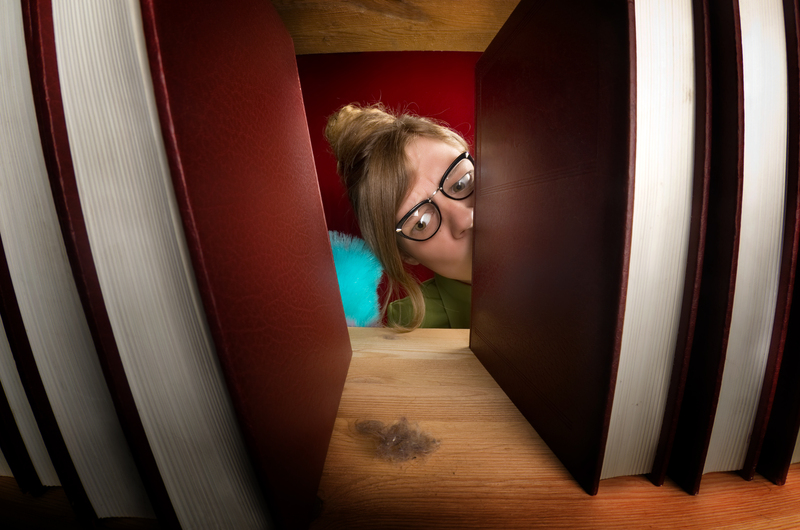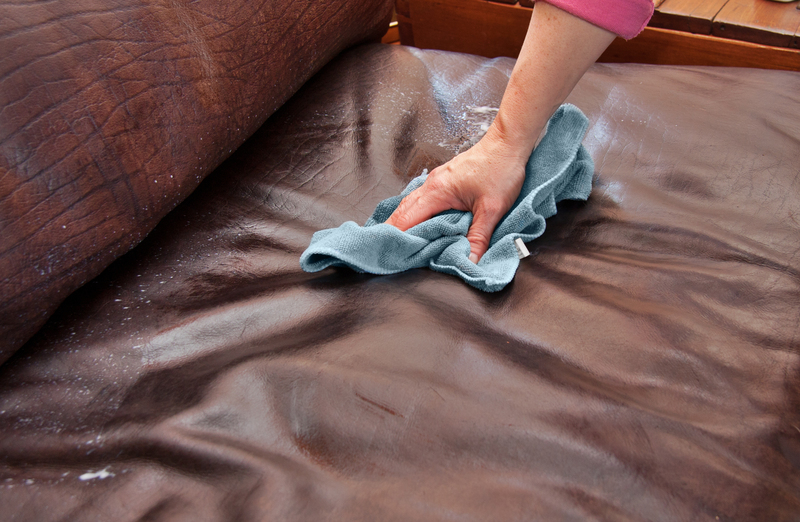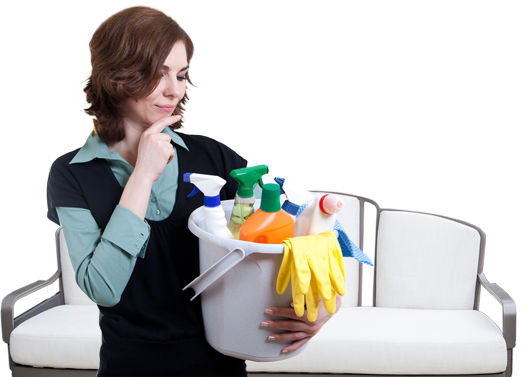Achieving Brilliance: Cleaning uPVC Window Frames Efficiently
Posted on 30/05/2025
Achieving Brilliance: Cleaning uPVC Window Frames Efficiently
uPVC window frames have become a popular choice for homeowners worldwide, thanks to their durability, energy efficiency, and low maintenance requirements. However, to keep these frames looking pristine and to ensure their longevity, regular and efficient cleaning is essential. In this comprehensive guide, we will uncover the best tips, methods, and practices for cleaning uPVC window frames efficiently. Whether you're tackling years of built-up grime or aiming for a sparkling finish, this article will provide actionable insights to restore the brilliance of your uPVC windows.
Understanding uPVC Window Frames
Before diving into cleaning techniques, it is crucial to understand what uPVC window frames are and why they require special care.
What Is uPVC?
- uPVC stands for unplasticized polyvinyl chloride, which is a hard, durable plastic material.
- Unlike traditional PVC, uPVC does not contain plasticizers, making it more rigid and less prone to bending.
- It is highly resistant to weathering, making it ideal for window frames.
Benefits of uPVC Window Frames
- Low maintenance: uPVC frames do not require regular painting or sealing.
- Weatherproof: Resistant to water, rot, and corrosion.
- Energy efficient: Provide excellent insulation.
- Eco-friendly: Many uPVC windows are recyclable.
Despite their advantages, uPVC window frames can lose their brilliance over time due to dust, dirt, pollution, and exposure to the elements. Hence, maintaining their cleanliness is key to achieving that brilliant, like-new appearance.

Why Cleaning uPVC Window Frames Matters
Keeping your uPVC windows clean is more than an aesthetic choice--it helps preserve their function and extend their lifespan. Here are the main reasons you should regularly clean your uPVC window frames:
- Prevents Staining: Dirt and pollutants can cause permanent stains if not cleaned promptly.
- Maintains Performance: Grit and debris can interfere with window seals and mechanisms.
- Improves Air Quality: Cleaning removes allergens and microbes that may accumulate on the frame surfaces.
- Enhances Curb Appeal: Sparkling frames make your entire home look well-maintained.
- Longevity: Regular care helps your uPVC frames last for decades.
How Often Should You Clean uPVC Window Frames?
Frequency matters. For most homes, cleaning every three to six months is recommended. However, properties near busy roads, coastlines, or construction zones may need more frequent cleaning--every two months or even monthly in extreme environments. Typically, regular, gentle cleaning is more effective than sporadic deep cleaning.
Essential Supplies for Cleaning uPVC Window Frames
Before starting the process of achieving brilliance on your uPVC window frames, gather the right supplies. The right tools and products ensure an efficient, scratch-free cleaning process. Here's what you'll need:
- Soft cloths or non-abrasive sponges (microfiber is best)
- Buckets of warm water
- Mild, non-abrasive cleaning solution (dish soap or dedicated uPVC cleaner)
- Soft-bristled brush for grained or textured frames
- Spray bottle for spot treatments
- Vacuum cleaner with brush attachment for dry dust/debris
- Old toothbrush for corners and crevices
- Towel or cloth for drying
- Optional: White vinegar and baking soda for stubborn stains
- Gloves to protect your hands
Step-by-Step Guide: Efficient Cleaning of uPVC Window Frames
Step 1: Prepare the Area
- Remove curtains or blinds to allow easy access.
- Open the windows as wide as possible.
- Place old towels under the window to catch drips or dirt.
Step 2: Dust and Vacuum
- Use a vacuum cleaner with a brush attachment to remove loose dust, cobwebs, and debris from around the frames and sills.
- Pay special attention to the corners and tracks, which often accumulate the most grime.
Step 3: Mix Your Cleaning Solution
- DIY Mix: Add a few drops of mild dish soap to a bucket of warm water.
- Commercial uPVC cleaners: Read the label and follow instructions precisely.
- Avoid harsh chemicals like bleach or abrasive powders--they can dull or damage uPVC surfaces.
Step 4: Wash the Frames
- Dip a soft cloth or sponge into the solution.
- Wipe the frames gently, covering all surfaces--top, sides, and underneath the sill.
- For textured frames, use a soft-bristled brush in circular motions.
- For tricky spots or hardware, apply solution using an old toothbrush.
Step 5: Tackle Stubborn Marks
- If standard cleaning misses some stains, make a paste of baking soda and water. Use a cloth to rub the paste gently onto the marks, then rinse the area.
- Alternatively, dab a little white vinegar on a soft cloth and target persistent stains.
- Never use steel wool or abrasive pads--these can permanently scratch the uPVC.
Step 6: Rinse and Wipe Dry
- With clean water and a fresh cloth, wipe down the frames to remove any soap residue.
- Dry thoroughly with a towel to prevent water spots or streaks.
Step 7: Clean the Window Tracks
- Vacuum the tracks once more if dirt remains.
- Use a moistened cloth to clean inside the tracks, then dry thoroughly.
- Lubricate the window mechanism if necessary using a silicon-based lubricant.
Advanced Tips for Achieving Brilliance on uPVC Window Frames
1. For Discoloration or Yellowing
- Mix one part white vinegar with four parts water in a spray bottle.
- Spray the solution onto yellowed areas, leave for 10 minutes, then gently scrub using a soft cloth.
- Rinse with plain water and dry for a reinvigorated look.
2. Restoring Shine
- Use a specialized uPVC cream cleaner (available at hardware stores).
- Apply with a soft, lint-free cloth and buff in circular motions to bring out a natural shine.
3. Treating Mold and Mildew
- Mix equal parts water and white vinegar, or use a mild anti-mold spray suitable for plastics.
- Apply the solution, allow it to sit for a few minutes, then scrub gently and rinse thoroughly.
- Dry well to prevent further microbial growth.
4. Polishing for Extra Brilliance
- After cleaning and drying, some homeowners use a small amount of car polish or a uPVC restorer to achieve a glass-like luster (test in an inconspicuous area first).
Common Mistakes to Avoid When Cleaning uPVC Window Frames
- Using abrasive tools like steel wool or harsh scrubbing pads.
- Applying strong solvents (acetone, white spirit, or bleach) that can deteriorate uPVC.
- Ignoring seals and gaskets--dirt here can cause leaks or mechanical issues.
- Allowing water to seep into sash or hardware, leading to mold or rust.
- Skipping regular cleaning, which allows grime to embed and stains to become permanent.
Eco-Friendly Cleaning Solutions for uPVC Window Frames
If you're passionate about green cleaning, there are several eco-conscious options:
- Baking Soda Paste: Gentle and non-toxic for most marks.
- White Vinegar: Naturally dissolves dirt, kills bacteria, and brightens surfaces.
- Lemon Juice: For a fresh scent and mild bleaching effect (test first).
- Castile Soap: Plant-based and biodegradable, ideal for mild cleaning.
Simply mix these ingredients with warm water and apply with a microfiber cloth for a chemical-free clean that's safe for pets, children, and the environment.
Maintaining uPVC Brilliance Between Deep Cleans
In addition to periodic deep cleaning, a few habits will help your uPVC window frames stay bright and clean year-round:
- Quick wipe-downs: After rainstorms or heavy winds, simply wipe the frames with a damp cloth to remove surface grime.
- Inspect seals and gaskets: Check for trapped dirt and gently clean around these sensitive areas.
- Dry thoroughly: Water left to dry on the frames can cause streaks or calcification marks.
- Address spills or splashes promptly: The sooner you clean, the less likely marks will set.
Professional uPVC Window Cleaning Services
While many homeowners prefer the DIY approach for routine maintenance, there are instances where hiring a professional window cleaning service is beneficial:
- Extensive staining or heavy soiling that resists normal cleaning efforts.
- Very high or hard-to-reach windows requiring special equipment.
- Time constraints--saving you hours of effort with professional efficiency.
- Comprehensive restoration, including treatments for fading or weathering.
Professionals utilize specialized uPVC cleaners, safe tools, and restoration techniques to revive the brilliance of your window frames without risk of damage.

Frequently Asked Questions About Cleaning uPVC Window Frames
Can vinegar damage uPVC window frames?
No, diluted white vinegar is safe to use on uPVC and is effective for removing stains and odors. Avoid prolonged contact or using undiluted vinegar for extended periods.
How do I get rid of black mold or mildew?
Use a 50:50 mixture of water and white vinegar on a soft cloth. Scrub gently and rinse well. For severe cases, use an anti-mold cleaner suitable for uPVC.
What should I NOT use to clean uPVC window frames?
- Abrasive pads or steel wool
- Solvents such as nail polish remover, paint thinner, or bleach
- Harsh commercial bathroom or oven cleaners
Why do my frames look dull even after cleaning?
If the frames are clean but lack sheen, they may need a gentle buffing with a uPVC cream cleaner or polish. Restoration products can also help if weathering has occurred.
Conclusion: Keep Your uPVC Windows Brilliant
Achieving brilliance with your uPVC window frames doesn't require expensive products or strenuous effort. By adopting a gentle, regular cleaning routine and using the right techniques, you can maintain sparkling clean, bright, and long-lasting uPVC windows for years to come.
- Use mild cleaning solutions and soft tools to avoid abrasion.
- Clean regularly--don't let dirt accumulate.
- Address stains and mold promptly with appropriate cleaners.
- Restore shine with uPVC creams or polishes as needed.
By implementing these methods for cleaning uPVC window frames efficiently, your windows will continue to enhance your home's beauty, value, and energy performance--achieving brilliance every time.





